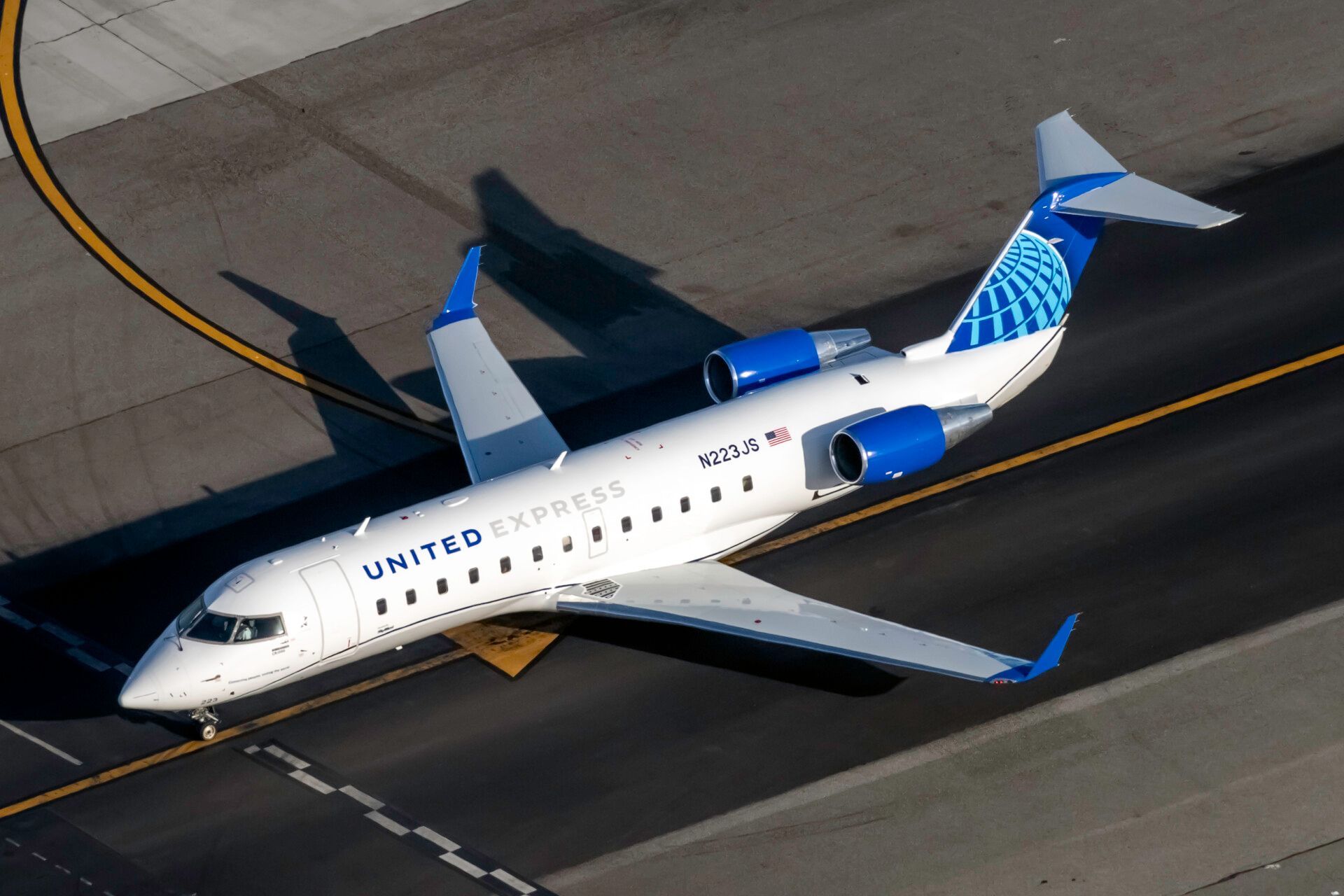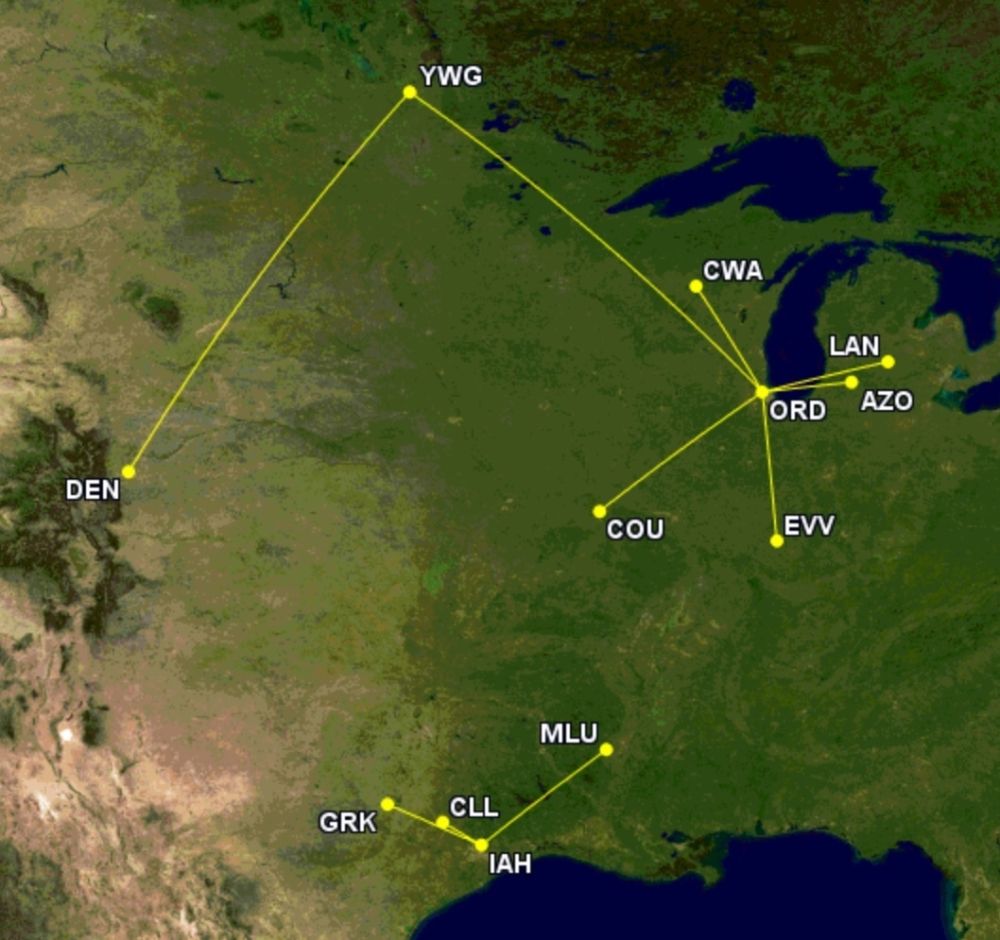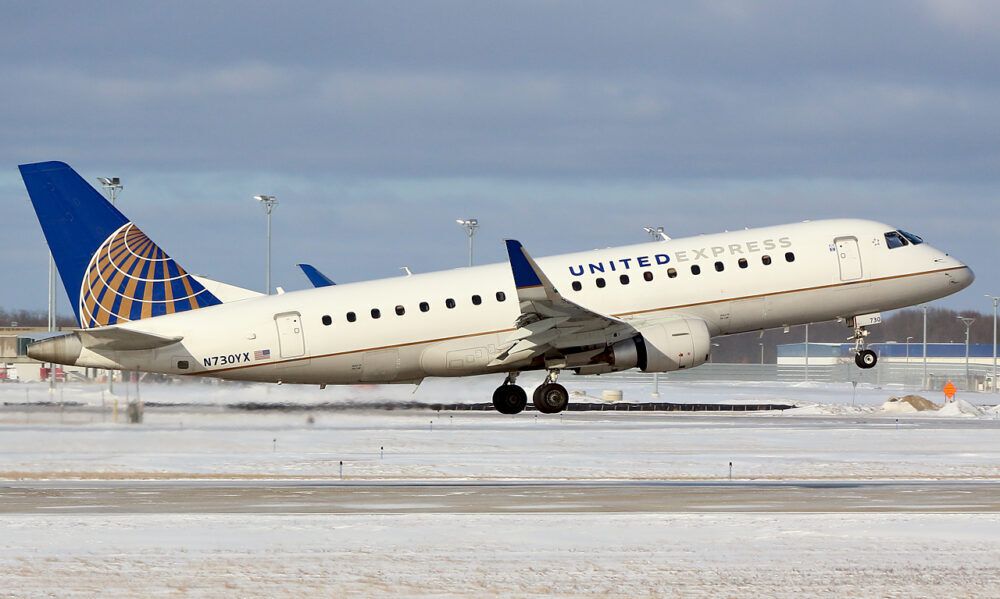United will remove nine smaller cities from its route map in the early new year, based on the carrier's latest schedule filing. College Station, Columbia, Evansville, Kalamazoo, Killeen, Lansing, Monroe, Wausau, and Winnipeg will no longer be served. We check it out.
Nine airports will no longer be served
In the latest round of airport cuts, eight US and one Canadian airport will no longer see United – or rather United Express – from early 2022, as detailed below. The average sector length of the routes is just 309 miles (498km), although this reduces to a mere 200 miles (322km) if the outlier (Winnipeg) is not considered.
- College Station (Texas; CLL); ends January 3rd; served from Houston Intercontinental
- Columbia (Missouri; COU); ends January 3rd; Chicago O'Hare
- Evansville (Indiana; EVV); ends January 3rd; Chicago O'Hare
- Kalamazoo (Michigan; AZO); ends January 3rd; Chicago O'Hare
- Killeen (Texas; GRK); ends January 3rd; Houston Intercontinental
- Lansing (Michigan; LAN); ends January 3rd; Chicago O'Hare
- Monroe (Louisana; MLU); ends January 3rd; Houston Intercontinental
- Wausau (Wisconsin; CWA); ends January 3rd; Chicago O'Hare
- Winnipeg (Canada; YWG) a special case (see the map's caption); Chicago O'Hare and Denver
Stay aware: Sign up for my weekly new routes newsletter.
93% of flights this month are by 50-seat RJs
This month, United Express' 50-seat Embraer 145s and CRJ-200s are used on 814 of the 876 round-trip flights involving the eight US airports, analyzing OAG schedules information shows. Such low-capacity aircraft have a high cost per available seat mile (CASM) at the best of times, let alone when the fuel price is at its highest level for a few years.
It is likely that the airports being cut - which only have between one and two United departures a day - cannot command high enough yields and, because of short distances, overly rely on connections (and therefore have lower yields). Indeed, data from the year ending Q1 2021 shows that United had an average of just 9.2% local passengers to/from these eight US airports (13% in 2019).
The situation is especially acute now given the labor shortage, which is also affecting other airlines. It requires decisions on where best to deploy assets, remembering that resources – including labor – shouldn't be spread too thinly.
Expect more airports to be cut
As United's Embraer 145s and CRJ-200s further reduce in use, expect more airports to disappear from the airline's network. The exception is if they can sustain premium-heavy CRJ-550s, CRJ-700s, and Embraer 170s and 175s with competitive schedules.
These aircraft have three classes and – in the case of the CRJ-700, E170, and E175 – far more seats. As always, it boils down to the balance between CASM and passenger revenue per available seat mile (PRASM). Use of these bigger aircraft will reduce CASM, but will the extra seats – especially the first seats and much higher number of economy plus seats – be needed? If not, it'll mean more discounting and therefore a reduction in PRASM.
What do you make of it all? Share your thoughts in the comments.



